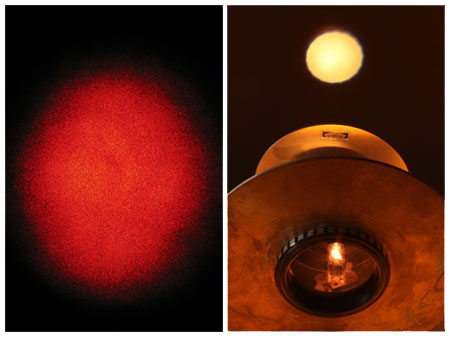2. Laser
What is a ‘laser’?
Lasers are sources of light with very special characteristics that distinguish them from all other light sources, whether natural or artificial. In this Chapter, we shall learn about these special characteristics and how this special kind of light is produced.
The term 'laser' is an acronym. It stands for:
Light amplification through stimulated emission of radiation,
The term shall be defined and explained more thoroughly in the next pages.
In this chapter, we shall deal with the functions and characteristics of lasers. A Helium-Neon laser (abbr. HeNe laser) shall be used for demonstration purposes. Here, a mixture of the rare gases Helium and Neon is used to produce the red laser light. This laser is therefore classified as a gas laser. There are also liquid and solid lasers but they shall not be dealt with in this tutorial.
A Helium-Neon laser in operation, viewed from above through its open casing is shown below. We see the glas tube that contains the Helium and Neon gases. An electric gas discharge causes the Neon gas to light up in an intensive orange colour. The tiny red spot on the right - which is only cognizable after magnifying with a lens - is the reflection of the laser light exiting on the right side onto a black shield.

This model of a HeNe laser is particularly suited for demonstrating the principles of Laser because it literally allows us to 'see' the different components inside the Laser. Usually, the HeNe lasers of most schools are contained in closed casings and do not allow a closer look at their interior.
Laser light and thermally generated light
At first, let's take a close look at the laser light. It is seen as a tiny red spot on the picture on the left column. If we magnify the laser beam with a lens and focus it on a shield, it will appear like the left picture below. For comparison, the light of a halogen lamp is shown on the right picture below. Likewise, its light is focused by two lenses on a shield.

